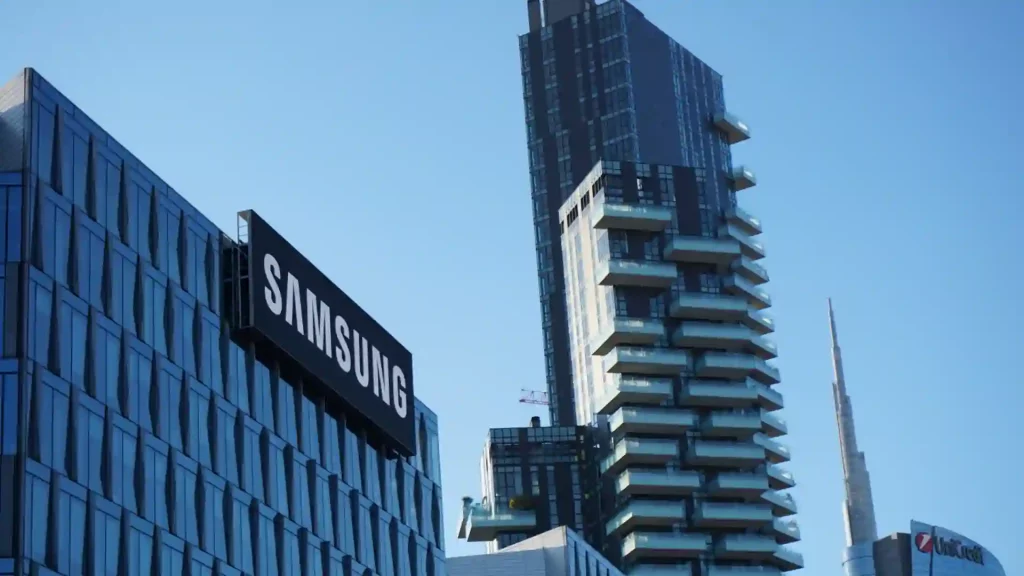The operating profit of Samsung’s semiconductor division is projected to drop 90% to $1.1 billion.
Samsung Electronics Co. is expected to report its lowest quarterly profit since the global financial crisis, due to a significant slowdown in technology demand that resulted in losses in its semiconductor division. The South Korean chipmaker is set to announce that its operating profit plunged about 90% to 1.45 trillion won ($1.1 billion) for the March quarter. This would be the smallest profit recorded since 2009. Most profit projections are below 1 trillion won, and in a few cases, just slightly above breakeven. The semiconductor industry is known for its boom-and-bust cycles but it suffered a major one during the COVID-19 pandemic.
Demand for chips rose during the pandemic, as consumers purchased new computers and smartphones, promoting chipmakers like Samsung to increase production. However, sales reduced as lockdown restrictions lifted, and with soaring inflation, rising interest rates, and other global economic factors, the semiconductor industry was left with a discrepancy between supply and demand. Inventories spiked, and prices for DRAM and NAND tumbled. Samsung, the largest player in memory chips, is expected to lose about $2.7 billion in its semiconductor division.
The biggest challenge currently is that chip inventories are too high, and to reduce them, the company will have to cut production, according to Lee Seung-Woo, an analyst at Eugene Investment & Securities. DRAM prices slid 20% in the first quarter and are expected to drop 10% to 15% in the second quarter, while NAND storage-chip prices plunged as much as 15% and are expected to fall another 5% to 10% in Q2.
Baik Gilhyun, an analyst at Yuanta Securities said that the memory prices dwindled further than the market’s expectations in the first quarter due to poor demand. Furthermore, he mentioned that the prices will fall, but at a slower pace in the current quarter, and there is not much further to slide since DRAM and NAND contract prices will soon hit the cash-cost level.
South Korea’s exports of chips declined by 34.5% in March, following a drop of over 40% in the previous month, according to data released by the country’s trade ministry. Total exports to China, which is Korea’s biggest trade partner, fell by 33.4%, as the world’s second-largest economy suffers from an economic slowdown.
Micron Technology Inc.’s CEO, Sanjay Mehrotra, said he is optimistic about a market recovery his year as inventory levels decline and demand recovers. Nevertheless, any improvement will depend on whether major chipmakers throttle back production. He further mentioned that the recovery could be accelerated if further supply cuts are made.
While Micron, SK Hynix Inc., and Kioxia Holdings Corp. have slashed spending on investment and cut production to stem further price declines, Samsung, the largest memory maker, has kept up its expenditures.
Samsung, led by Jay Y. Lee, the founder’s grandson, has said that its strategy historically has been to keep spending during slumps to increase its competitive position. The approach might help the company grab market share and develop new tech to wield against rivals like Hynix and Micron when they don’t have the cash to keep up.
Samsung is now constructing its fourth chip production line in Pyeongtaek and plans to add two more lines by the end of this decade. In addition to memory chips, Samsung is trying to scale up its semiconductor foundry business, which is now dominated by Taiwan Semiconductor Manufacturing Co. Samsung has announced a 200 trillion won ($229 billion) investment for a new mega chip campus in Yongin for the next two decades.
Despite calls from rivals and investors to follow the path of its competitors and cut production, in February, Samsung’s executives were told by Lee not to be daunted by the industry’s difficulties and to continue investing in the future.
